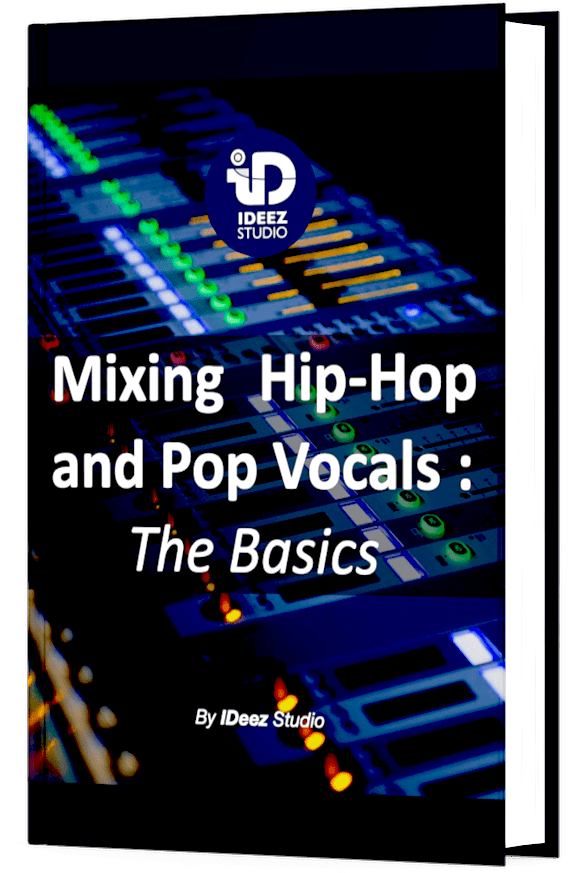Want to start recording vocals? Well, these days, it’s not so hard to get something clean (almost pro) from the comfort of your own home. Let’s take a look at what you need to start recording vocals right away.

Here’s the equipment you need to start recording vocals:
- Microphone
- Pop filter
- Microphone stand
- XLR Cable
- Audio Interface
- DAW
- Laptop / Computer
- Headphones
- Monitor speakers (bonus)
Some items on this list are more essential than others. Like the microphone or laptop, for example. But keep in mind that this list represents the bare minimum for achieving correct, usable quality in your recordings.
If you remove the pop filter (which could be considered non-essential), the plausives will be excessively noticeable in the recording. Or if you record without a DAW, you’ll have a hard time processing your signal afterwards. If you don’t use a microphone, you’ll have a lot of unwanted noise.
In short, each item on this list is important to a greater or lesser degree. And I can guarantee that if you start from scratch, you’ll feel like you’re in a professional studio.
All you have to do is take the step of acquiring every item on the list. It’s a bit of a budget, but well worth it if you want to get a minimum of quality from your vocal recordings.

1. Microphone

Logically enough, the first thing you need to start recording vocals is a microphone. In the recording chain, the microphone is what allows the acoustic waves (potentially your voice) to be converted into an electrical signal.
There are many types, models and technologies of microphone available today. And always keep in mind that the choice of microphone has a huge impact on how it sounds in the end.
Note: Some microphones have their own preamp and can be sent directly as a USB signal to a computer. That’s why they’re called “USB microphones“. But I strongly advise against this type of microphone, which is likely to give you a very poor sound, both in terms of frequency and dynamics.
But for recording vocals in a studio environment, large-diaphragm condenser mics are the most popular choice. This type of microphone will give you all the clarity, precision and cleanliness you need to get the most out of your vocals later on. But in this jungle of microphones, which one should you choose?
ℹ️ Want to know more about condenser microphones? Then this article is for you: What Is a Condenser Microphone ?
A. Entry-level microphone
When people ask me for advice on a good entry-level microphone, I always tell them straight away about the Audio-Technica AT-2020, which for me is the best microphone in this category. In my opinion, it offers much better performance than the well-known Rode NT1-A, the best-selling microphone in the entry-level category.
The AT-2020 is appreciated for its transparent and accurate sound reproduction. It captures vocals with clarity and detail, making it suitable for a variety of genres. The microphone has a relatively flat frequency response and it ensures a natural and authentic representation of the recorded sound.
The Audio-Technica AT-2020 is a reliable and budget-friendly microphone that delivers excellent sound quality for home studio recordings, particularly vocals. And I’m convinced that it’s the best choice for people who want to start recording vocals without spending hundreds of dollars in a microphone.

B. Mid-range microphone
If you want to enjoy sound reproduction quality superior to that offered by an entry-level microphone, I recommend the AKG C214. This is a microphone I’ve used for years to record vocals, and it has many unique advantages for a mic in this range.
The AKG C214 is a versatile and high-performance microphone. The dual-diaphragm design allows for precise control over the microphone’s response, making it suitable for a wide range of recording applications.
The microphone captures vocals with a warm and detailed tone, providing a professional and polished sound. Its rich sound quality contribute to its reputation as a top-tier recording microphone.
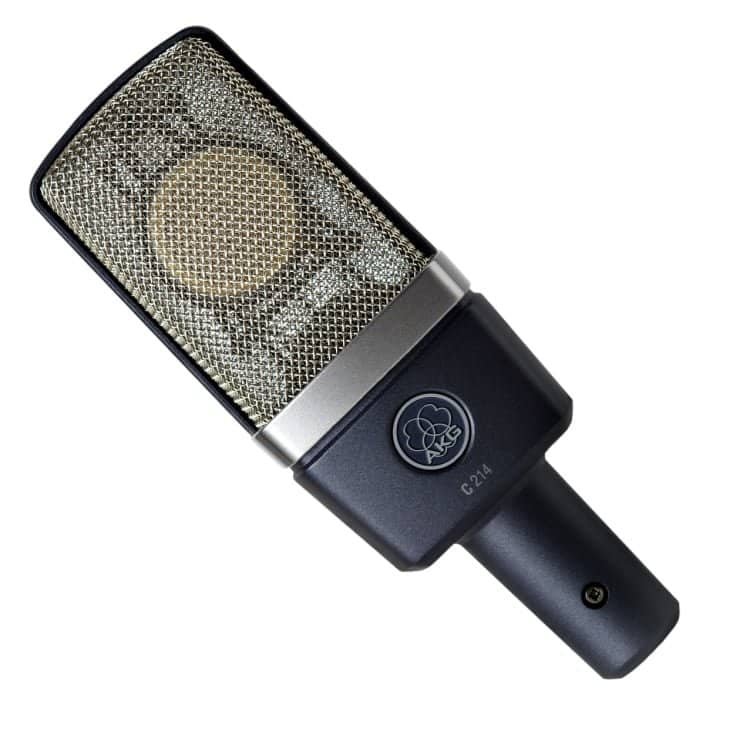
C. High-end microphone
Less likely, but possible: you want to start recording vocals straight away with a professional, high-quality microphone. Well, why not! If so, I recommend the Neumann TLM 103. The “little brother” of the famous U87.
The TLM 103 is able to capture a wide frequency range with precision, providing a balanced and detailed tone. Vocals recorded with the TLM 103 often exhibit a smooth and natural quality.
The Neumann TLM 103 also stands out for its exceptional build quality, transparent sound reproduction, and German engineering pedigree. It is a microphone that excels in capturing the subtleties of vocals and instruments. If you want to get a studio-quality sound from you home studio, this mic is for you!

2. Pop Filter

It might seem trivial, but if you’re using a condenser microphone like those mentioned above, you’ll definitely need to get yourself a pop filter. But why is it so essential?
Well, condenser microphones are very sensitive to sudden gusts of wind and air movement, especially in cardioid polar patterns. So much so, that when too much air is blown into the capsule, it “reacts” by emitting a low frequency that can ruin your takes.
In particular, the consonant “p” is the most aggressive for a condenser microphone.
To counter this problem, the solution is simple and inexpensive: the pop filter. This filter, made of synthetic fabric or metal, stops the most violent bursts of air coming from the singer’s or rapper’s mouth.
Once again, the use of this type of filter in vocal recording with a condenser microphone is essential. Without it, you can be sure that you’ll never get pro quality, even with a quality mix.
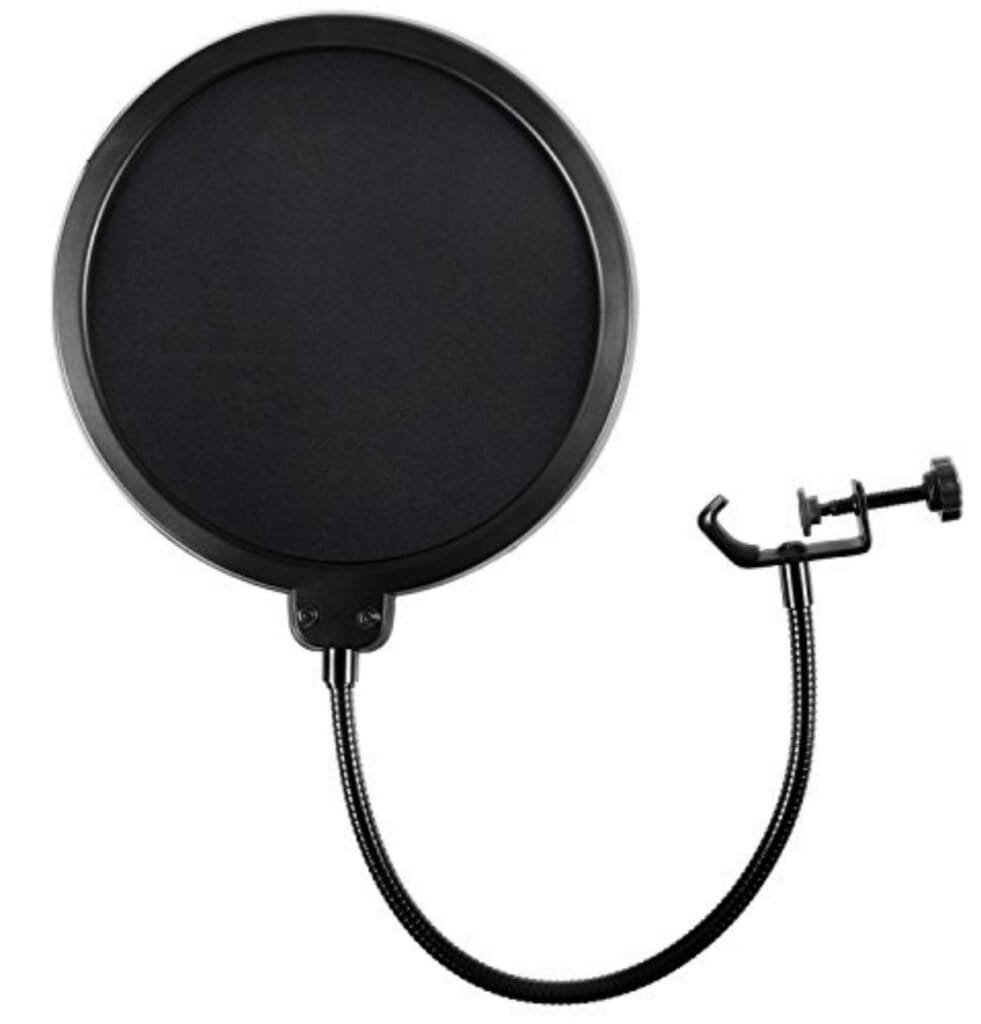
3. Microphone stand

Once again, the microphone stand is an essential tool for making good vocal recordings in your home studio. Because, no, studio recording is not the same as live performance! A stand is absolutely vital.
In fact, in live performance, a mic stand isn’t always necessary (depending on the genre you’re in). You can keep the mic in your hand without any problems or noise.
But don’t do that for studio recording! Or at least not with a condenser microphone. Because these microphones are also very sensitive to physical handling. The slightest touch of the hand can cause a very unpleasant bassy noise in the recording.
It’s also important to remember that holding the microphone in your hand increases the chances of varying the distance between your mouth and the microphone capsule, and therefore the rendering of the vocal recording. This will make the task of mixing and editing audio more tedious.
These are just some of the reasons why a mic stand should be part of your basic equipment when you start recording vocals. Because it will prevent any physical noise from intruding into your future recordings.
Depending on your recording preferences, you can either opt for a “classic” mic stand, built for recording standing up. Or a stand built to be placed on a desk if you wish to record sitting down.
Note: To further avoid potential physical disturbances (unintentional kicks on the mic stand, for example), I also advise you to buy a shockmount that will “filter” external vibrations. Although these are usually supplied with the microphone, I’d still advise you to check before you buy.
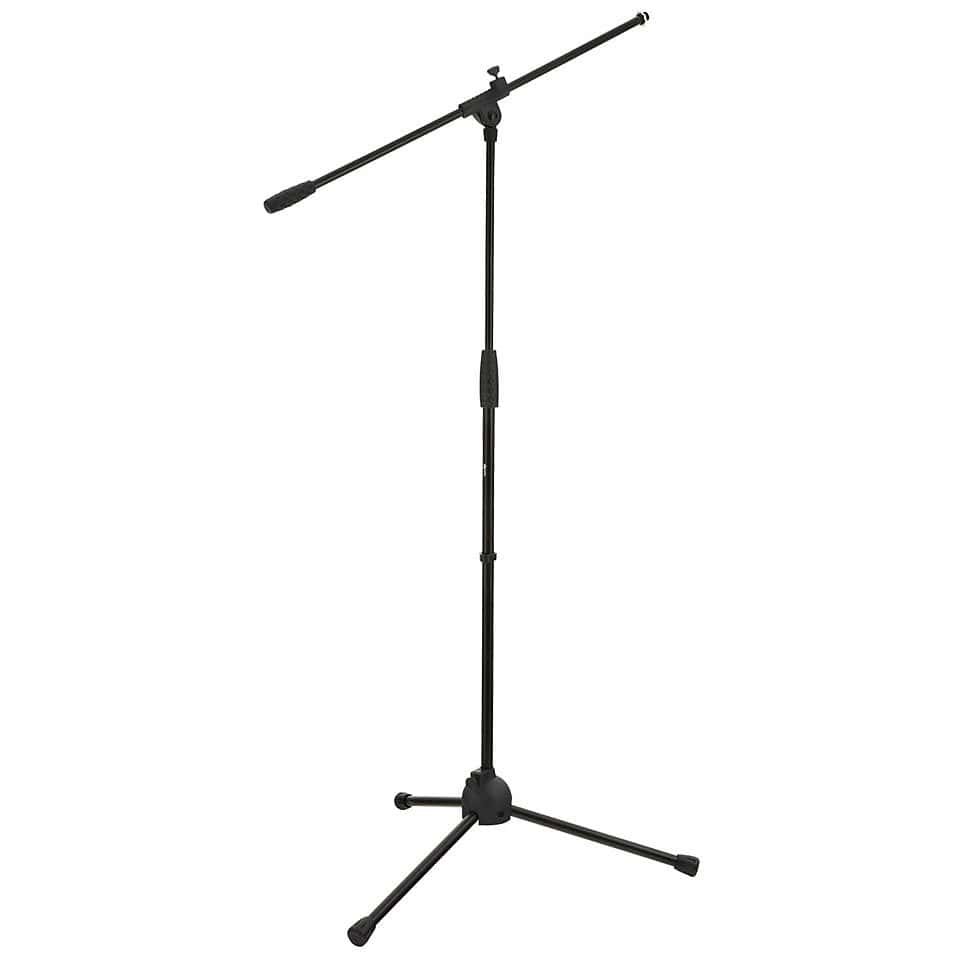
4. XLR Cable

Once your microphone has transformed the acoustic signal from your vocals into an electrical signal, you’ll need to send it to your audio interface (we’ll come to this in the next section). And the type of cable used for this audio application is called an XLR cable.
This very specific type of cable allows the electrical signal to travel over several meters of cable, while being protected from electromagnetic interference. It’s a type of cable known as balanced.
Without going into too much detail, this type of cable is divided into 3 parts: hot, cold and ground. This “division” into 3 allows the signal to be protected against all types of interference, even over longer distances (proportional to the size of a studio).
Although the operation of an XLR cable may seem fairly banal and ordinary, the build quality is not always the same for all XLR cables. So I’d advise you to go straight for a quality XLR cable, like the Cordial, Pig Hog or Ogami ones.
These cables are a little more expensive than the others, but their build quality and connectors allow the electrical signal to be transmitted to the interface without the slightest modification.
Believe me, a bad XLR cable can ruin the quality of your vocal recordings. Brands such as sssnake or pro snake are therefore, in my opinion, to be avoided.
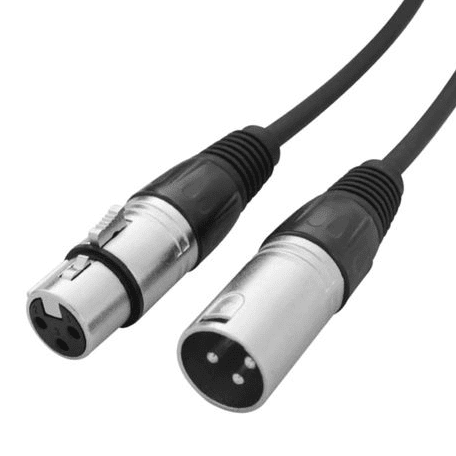
5. Audio Interface

Let’s move on to something a little more exciting: the audio interface!
An audio interface is a versatile hardware device that facilitates the connection of audio equipment to a computer. The usual applications being recording, playback, and processing of audio signals.
In other words, an audio interface serves as the bridge between analog and digital audio worlds, enabling musicians, producers, and sound engineers to capture and manipulate sound in a digital format.
As you soon realize, without an audio interface, the connection between your microphone and your computer would be impossible. It’s the key element that brings the audio signal in (or out) one direction or another, from analog to digital, and vice-versa.
Key features of an audio interface
In an audio interface, you will generally find these features:
- Analog-to-Digital Conversion (ADC): Audio interfaces convert analog signals from microphones, instruments, or other sources into digital data that a computer can process.
- Digital-to-Analog Conversion (DAC): On the playback side, the interface converts digital audio data from the computer back into analog signals that can be sent to speakers or headphones for monitoring.
- Input and Output Ports: Audio interfaces come with a variety of input and output options, such as XLR, 1/4-inch, and MIDI connectors. These ports allow you to connect microphones, instruments, speakers, and other audio gear to the interface.
- Preamps: Many audio interfaces include built-in preamplifiers, which amplify weak microphone or instrument signals to line level. High-quality preamps contribute to better signal clarity and fidelity during recording.
- Monitoring Options: Audio interfaces provide ways to monitor audio in real-time. This includes direct monitoring (listening to the input signal before it goes through the computer) and headphone or speaker outputs for playback.
- Connectors to the computer: Audio interfaces connect to computers via USB, Thunderbolt, FireWire, or other interfaces. It’s essential to choose an interface that is compatible with your computer and recording software.
Now that you know exactly what an audio interface does, you need to find one that suits your needs and budget. Here are a few suggestions to explore, depending on your budget.
A. Entry-level Audio interface
If you don’t have a very high budget for an audio interface (which makes sense if you want to just start recording vocals), I’d advise you to go for Univeral Audio’s Volt series, in particular the Volt 2.
This audio interface series, released just a few years ago, lets you enjoy Universal Audio quality audio without wasting all your money.
The Volt 2 is robust, solid and inspires professionalism. It also features a vintage mode that lets you enjoy a different color and tone on your voice recordings.
A cool perk of Volt audio interfaces is that you get several UAD plug-ins worth hundreds of dollars, free of charge. And frankly, using UAD plug-ins as a beginner is a real luxury!
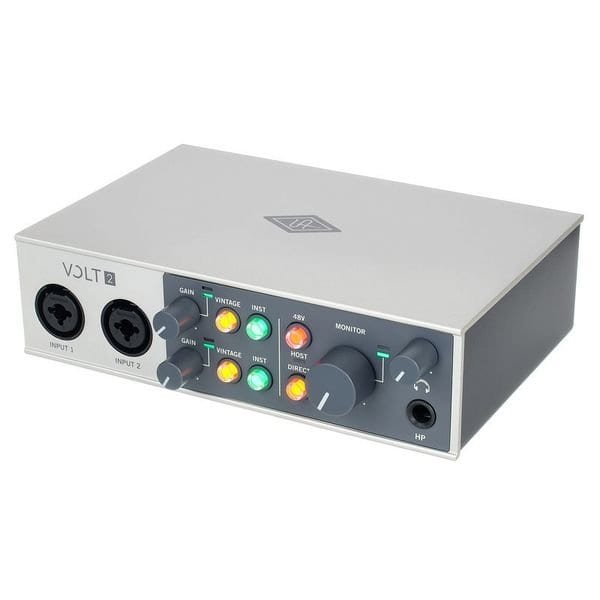
B. Mid-range audio interface
Higher budget? Then I recommend the Focusrite Clarett+ 2Pre. An audio interface that lets you record vocals with incredible precision and robustness!
Unlike the Scarlett series, which is designed more for hobbyists, Focusrite’s Clarett series can be considered as the semi-pro or even pro audio interface series.
What’s more, the Clarett+ 2Pre features an optical input, allowing you to add 8 (yes, eight!) ADAT or SPDIF audio inputs at 44.1 or 48 kHz . If you’re thinking of making more substantial recordings in the near future, this feature could make all the difference to your choice.
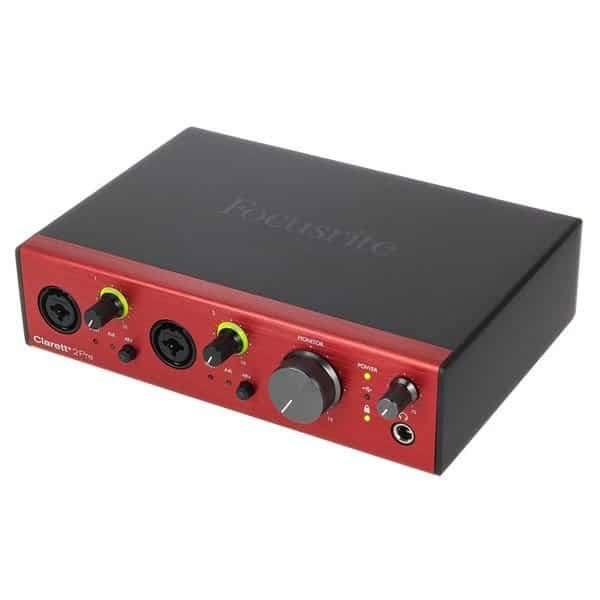
C. High-end audio interface
What if you want to start recording vocals with the best possible audio interface quality? Then I recommend Universal Audio’s Apollo Twin.
Over the years, Universal Audio’s Apollo series has established itself as a classic in professional vocal recording. Its super-stable conversion quality, breathtakingly precise preamps and DSP engine included in the audio interface itself make it an unbeatable tool in the studio world.
With the Apollo Twin in your home studio, you’ll also be able to enjoy latency-free monitoring, while using UAD plugins right from the vocal recording stage. If your goal is to make vocal recording a potential profession in the future, buying an Apollo Twin is a great investment!
ℹ️ Yes, the Apollo Twin audio interface is much more expensive than the more classic ones, but there are some good reasons behind this price. I explain everything here: Why Are Apollo Interfaces So Expensive? [Full Answer]
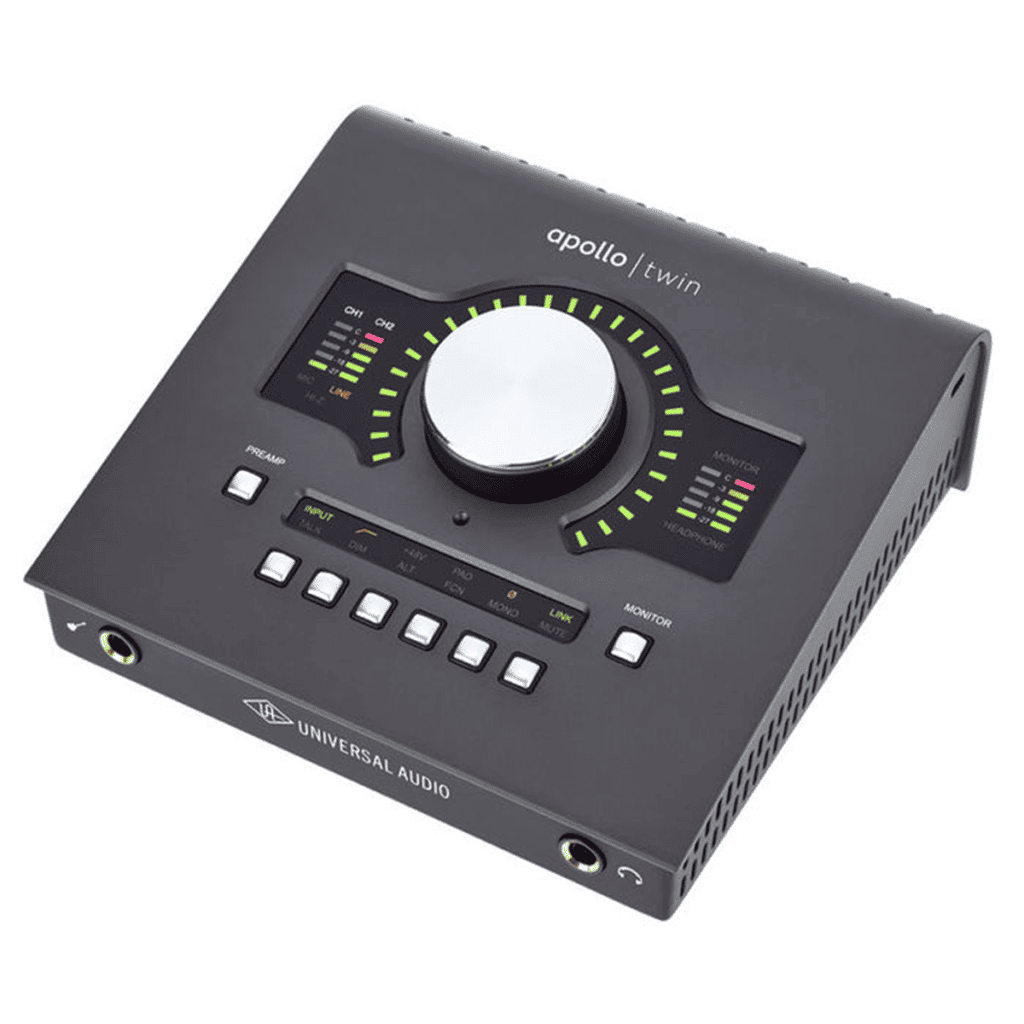
ℹ️ Want to use ADAT with your future Apollo interface? Discover here Which ADAT Preamp To Use With Your Apollo Interface
6. DAW

If you want to start recording vocals cleanly and professionally, you’ll need more than just the basic applications on your computer. What you really need is what’s known as a Digital Audio Workstation (DAW). But what exactly is a DAW?
A Digital Audio Workstation (DAW) is a software application that enables musicians, producers, and audio engineers to record, edit, arrange, and produce digital audio tracks. It typically includes tools for mixing, mastering, and integrating virtual instruments and effects.
This type of software allows users to record live audio, enabling the creation of multi-track songs and compositions. This capability is generally complemented by MIDI sequencing, allowing for the integration of virtual instruments (VSTi) and the manipulation of musical ideas in a digital format.
A DAW also enables users to fine-tune recorded audio clips with precision, thanks to the tools and plugins implemented (or implementable) within the software. The arrangement features facilitate the organization and structuring of musical elements on a timeline and provides a visual representation of the composition.
Every DAW on the market today offers different features, interfaces and workflows to its users. Choosing your first DAW is therefore far from easy, as you need to be able to adapt your choice to a number of very specific parameters.
ℹ️ But don’t worry! A very complete article on How To Choose Your First DAW [In 7 Steps] is available on the website! In this article you’ll get all the information you need to make the perfect choice!
7. Laptop / Computer

In modern studio recording, the computer is at the heart of the setup in 99% of cases. It is the tool that centralizes the entire music production process, allowing the user to run plug-ins, play and record audio, and perform digital processing that only a computer can handle.
But not every computer can handle the recording, playback and audio processing (plugins) of your DAW. Indeed, you need minimum performance to avoid crashes or simply excessive slowness that would kill your workflow and your efficiency.
Your choice of computer will depend very much on the scope of your future music production projects. Do you simply want to make vocal recordings with simplistic post-processing, or are you planning to make more complex recordings fairly quickly? It’s essential to know this before making any purchase.
In any case, here are the minimum performance levels I think you should look for in your computer.
Minimum performance requirements
- Processor (CPU): A multi-core processor is highly recommended. A quad-core processor or higher is often sufficient for basic projects, but for more demanding tasks and larger projects, a hexa-core or octa-core processor can provide better performance.
- RAM (Memory): The amount of RAM is crucial for smooth DAW operation. While 8 GB may be sufficient for light projects, it’s advisable to have at least 16 GB or more for more complex arrangements and larger sample libraries.
- Storage (Hard Drive/SSD): A fast and spacious storage solution is essential, especially if you’re working with large audio files and sample libraries. Consider using a Solid State Drive (SSD) for your system drive and project files, as they offer faster read and write speeds compared to traditional Hard Disk Drives (HDDs).
- Audio Interface Compatibility: Ensure that your computer has the necessary ports and compatibility with the audio interface you plan to use. USB, Thunderbolt, or other interfaces should match your computer’s available ports.
- Graphics Card (GPU): While a dedicated graphics card is not always a critical factor for audio production, it can contribute to smoother graphics performance within the DAW. This can be particularly relevant if your DAW uses graphical processing for certain tasks.
- Operating System: Ensure that your operating system is compatible with the DAW software you intend to use. Most modern DAWs support both Windows and macOS.
I personally think that for music production (and particularly in the professional world), Mac is better suited than Windows, on many levels. But I know that everyone’s preferences are different. So here are my tips for a Mac or Windows computer.
MacOS
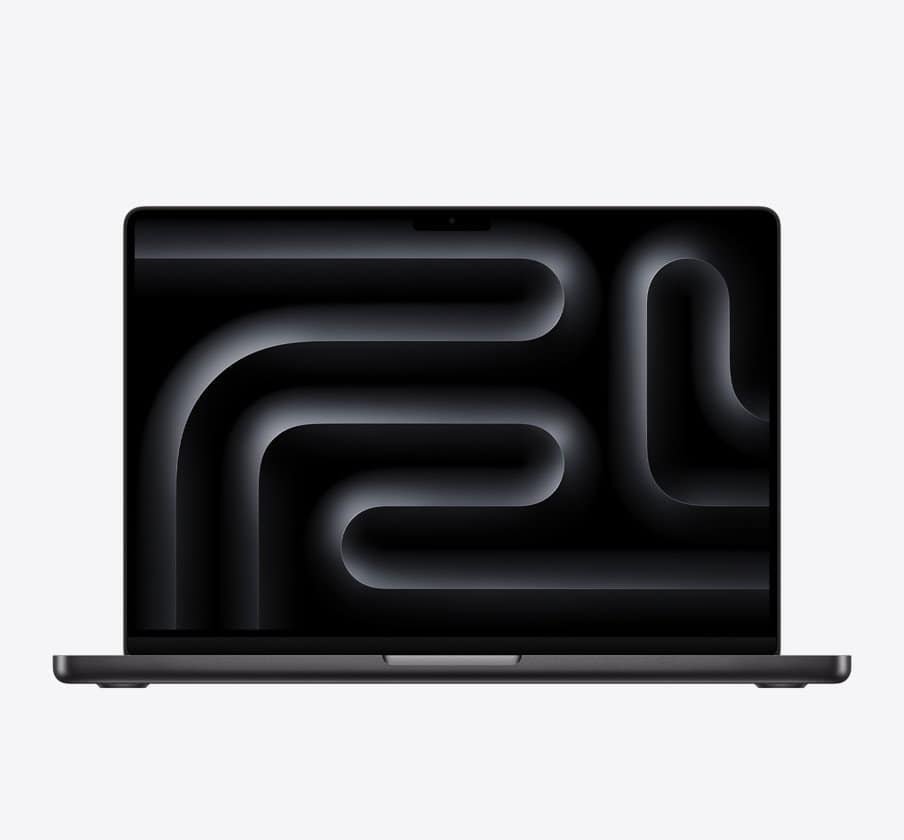
Windows

8. Headphones

To start recording vocals, you’ll need headphones. They’ll let you play the instrumental you’re singing to while you record, and then listen back to what you’ve recorded. I know, this may sound very silly to some readers, but I promise you that some beginners forget this crucial element!
But don’t choose just any headphones! Some are designed for recording, others for mixing, mastering or beatmaking. You’ll also need to take care to choose studio headphones, which are more suitable in terms of electrical impedance. I’ll explain everything below…
Don’t choose open-back headphones!
First of all, you need to know that in the world of music production, there are two main types of studio headphones: open-back and closed-back headphones. But what exactly is the difference between these two types of headphones?
Closed-back headphones have sealed ear cups, which isolate the listener from external noise and prevent sound leakage. While open-back headphones have perforated ear cups that allow airflow and some sound to escape, resulting in a more natural and open sound but with less isolation.
As you can see from this definition, open-back headphones should be avoided at all costs for recording. This is because they let the instrumental playback escape and bleed into your vocal recording.
You must therefore opt for closed-back headphones. Admittedly, the sound quality is generally poorer than with open-back, but you can be sure that the sound remains locked in the headphones. Unless you turn up the volume extremely loud in your ears, which I don’t recommend for your health.
ℹ️ Need more explanations? Then I recommend you this article that answers the question deeply Closed-Back vs Open-Back Headphones: What Is The Difference?
Comfort is essential
When you record your vocals (or those of another singer or rapper), you need to feel 100% involved in the vibe of the instrumental you’re singing on. In fact, you will potentially sing… for hours on end!
That’s why it’s important to choose headphones with a minimum of comfort. I can swear that uncomfortable headphones can ruin recording sessions because they become painful for the ears after 2 or 3 hours.
For maximum comfort, over-ear headphones are the way to go, as the earpads are wider and won’t press on your ears.
Impedance
The last parameter you’ll need to pay attention to when buying headphones is their impedance. If you choose the wrong one, you may not get amplification powerful enough to hear your music at the right level. But first of all, what is impedance?
Impedance is a measure of opposition to the flow of alternating current in a circuit, typically applied to headphones and speakers, indicating how much resistance they offer to the electrical signal from the audio source. Higher impedance headphones require more power to produce the same volume level but may offer better sound quality when paired with appropriate amplification.
This means that if you choose headphones whose impedance is too high, the electrical resistance will be so strong that the amplification of your interface will not be powerful enough to deliver a right level to your ears. And if you find yourself in this kind of situation in your home studio, that’s when the trouble starts!
To give you an idea, it’s around 80-100 ohm that you’ll be most comfortable using headphones in your home studio. Higher values will produce the problems described above. Lower values are better suited to more “mainstream” use, with DJ equipment for example.
ℹ️ There’s actually much more than these 3 parameters to consider before buying studio headphones. In this article, you’ll find out everything you need to make the perfect choice: Studio Headphones: 8 Things To Consider Before Buying
Beyerdynamic DT-770: the ultimate classic
For many years now, the Beyerdymaic DT-770 has been the No. 1 headphone in the world of music production. You can find these headphones in studios and home studios the world over! And for good reason.
First of all, they offer unbeatable value for money. Secondly, these headphones are exceptionally comfortable. You can wear them for hours and you won’t even feel them on your head. And finally, the sound quality of the DT-770 is extremely reliable.
There are many other reasons why these headphones have been the most popular in the audio world for decades. I strongly advise you to choose these headphones as your first choice, especially at this price!
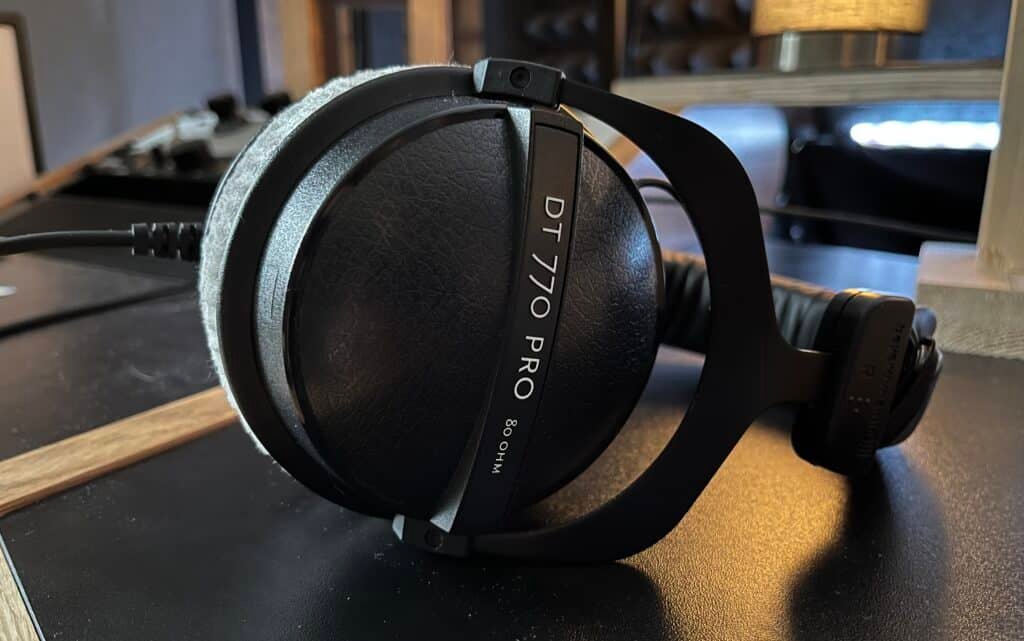
9. Monitor speakers (bonus)

Strictly speaking, you don’t need monitor speakers in your studio. You can use your headphones to listen to your takes, mix, master, produce,… But… let’s be honest, it’s not very comfortable in terms of listening. And the ear-health aspect is important too: listening for long hours to something that comes out directly in your ears, that’s really not good!
That’s why monitor speakers are quite important, despite their “non-essential” aspect. They allow you to listen to your mix in a more global, lively and dynamic way. And they’ll tire your ears less than headphones.
To start recording vocals, you don’t need fancy monitoring speakers. And you certainly don’t need big speakers, especially if the acoustics in your room aren’t great.
Monitoring speakers with a 3″ or 4″ woofer are usually enough to get you started. You can then go for “bigger” speakers if you evolve in music production and treat your room acoustics correctly.
In my opinion, taking into account audio quality, budget and value for money, the Yamaha HS5 monitors are the best in this category. You can find out more by clicking the link below.
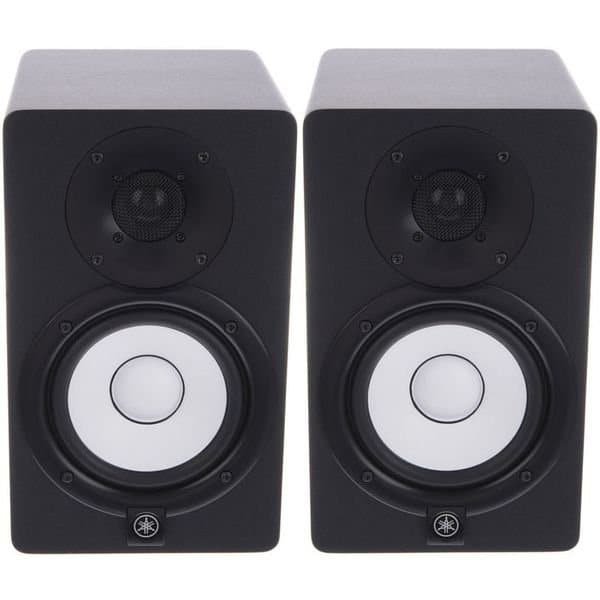
Conclusion
Recording vocals requires a lot more equipment than just a microphone and a recorder. And while all this equipment may seem expensive as a beginner, these 9 pieces of equipment are essential to get the right quality from your vocal recordings. Removing just one item from this list can completely block you in the recording process.
A final word of advice: when making future purchases, don’t just go for the most expensive equipment, thinking that the final quality of your tracks will come by itself. You are the master of the final quality of your music, not your equipment. Also remember to adapt your purchases to your needs and budget.
Related Articles:
My favorite tools for mixing pop and hip-hop music:
Plugins
In the field of auto-tune, I’m convinced that nothing’s better and more efficient than Antares Auto-Tune Pro. As for the EQ’s, FabFilter Pro-Q3 and Slate Digital Infinity EQ are, in my opinion, the best tools. For compression, I have 2 favorites plugins: Waves RComp and UAD EL8 Distressor.
As for reverb, I’m a big fan of the Soundtoys Little Plate, but generally, I go for the Valhalla VintageVerb for its versatility. I also love the Arturia Rev PLATE-140 and the UAD Pure Plate for its organic side.
Headphones
The closed headphones I love and will always love using for mixing pop and hip-hop music are the Beyerdynamic DT-770. As for the best open-back headphones, I use the Sennheiser HD600 headphones, and I’m really happy of them!
Monitors
Having a pair of Yamaha HS7 in its studio or home studio is always cool for more excitement while listening to your mixes. The Adam Audio T7V monitors are also super accurate. In my studio, I also have a pair of Genelec 8030 for their reliability.
Hardware gear
For anyone who wants to start using hardware in their mixes, I always recommend these 2 units from Klark Teknik: the EQP-KT and the 76-KT. Don’t forget to use good converters, such as the Apollo interfaces. This is essential for a good rendering.
